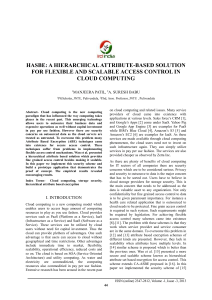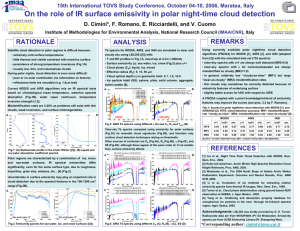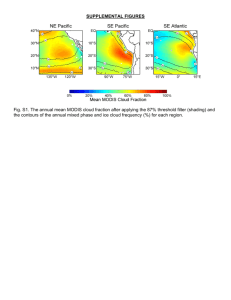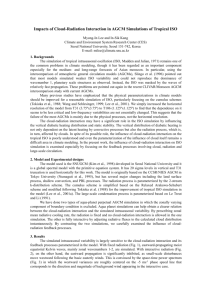jgrd52538-sup-0001-supplementary
advertisement
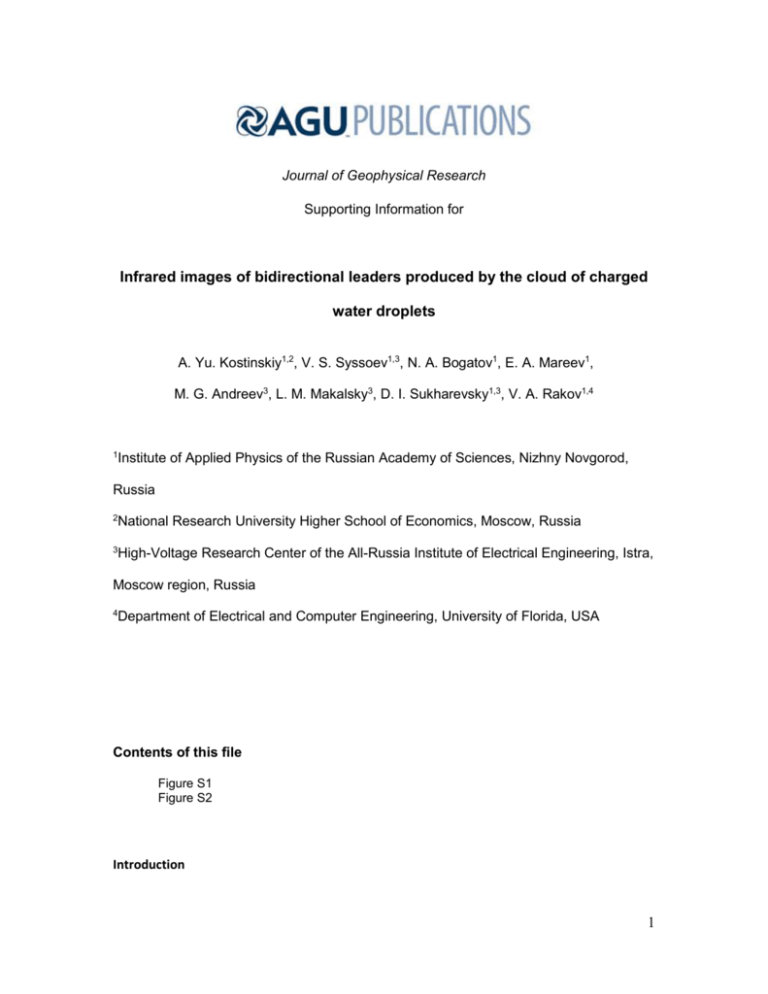
Journal of Geophysical Research Supporting Information for Infrared images of bidirectional leaders produced by the cloud of charged water droplets A. Yu. Kostinskiy1,2, V. S. Syssoev1,3, N. A. Bogatov1, E. A. Mareev1, M. G. Andreev3, L. M. Makalsky3, D. I. Sukharevsky1,3, V. A. Rakov1,4 1 Institute of Applied Physics of the Russian Academy of Sciences, Nizhny Novgorod, Russia 2 National Research University Higher School of Economics, Moscow, Russia 3 High-Voltage Research Center of the All-Russia Institute of Electrical Engineering, Istra, Moscow region, Russia 4 Department of Electrical and Computer Engineering, University of Florida, USA Contents of this file Figure S1 Figure S2 Introduction 1 This supporting information presents two examples of UPL current waveforms, one for the event (shown in Fig. 2) that was not followed by a return-stroke-like process and the other for an event (not considered in this paper) that was. In both cases the cloud was negatively charged, while all the events presented in the paper (except for the one shown in Fig. 2) correspond to the positively charged cloud . Fig. S1. Current waveform (top) and signal from the elevated 50-cm sphere 9 (see Fig. 1) used for monitoring variations of cloud charge (bottom) for the event shown in Fig. 2 (the cloud is negatively charged). Labeled are the initial streamer corona burst (1), upward positive leader current (2), and the induced potential (3) on the sphere indicating the removal of negative charge from the cloud. No return-stroke-like process occurred. 2 Fig. S2. Current waveform (top), signal from the elevated 50-cm sphere 9 (see Fig. 1) used for monitoring variations of cloud charge (middle), and trigger pulse to the highspeed camera (bottom) for an event not considered in this paper. The cloud was negatively charged. Labeled are the initial streamer corona burst (1), upward positive leader current (2), the induced potential on the sphere indicating the removal of negative charge from the cloud (3), the return-stroke current (4), and the camera trigger pulse (5). 3








